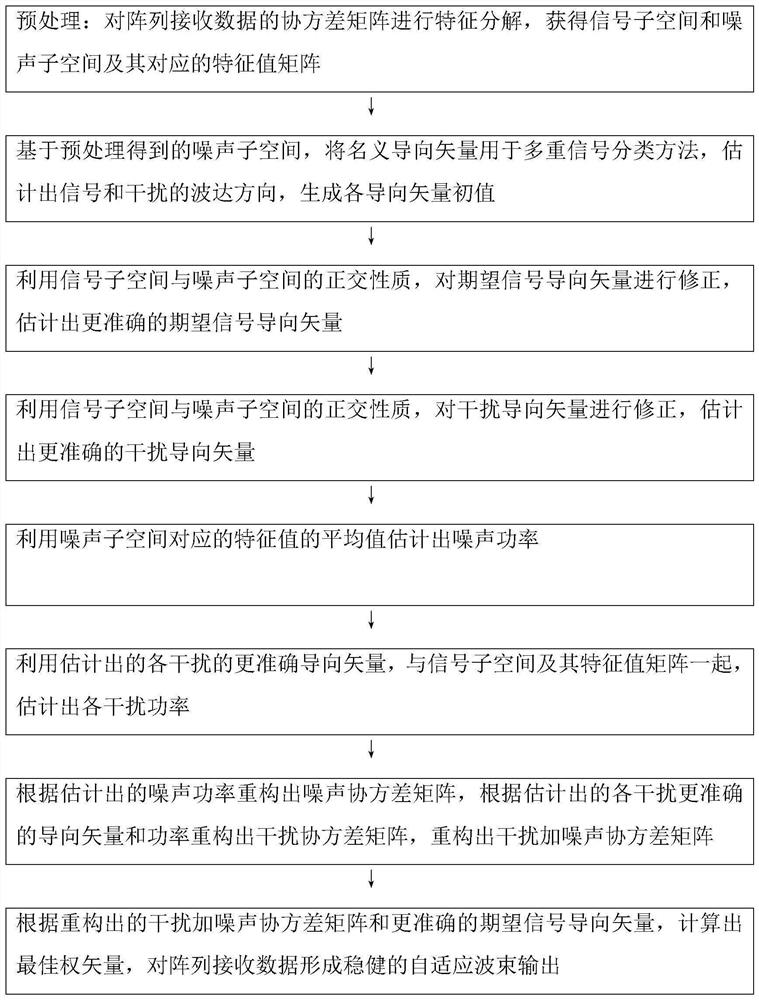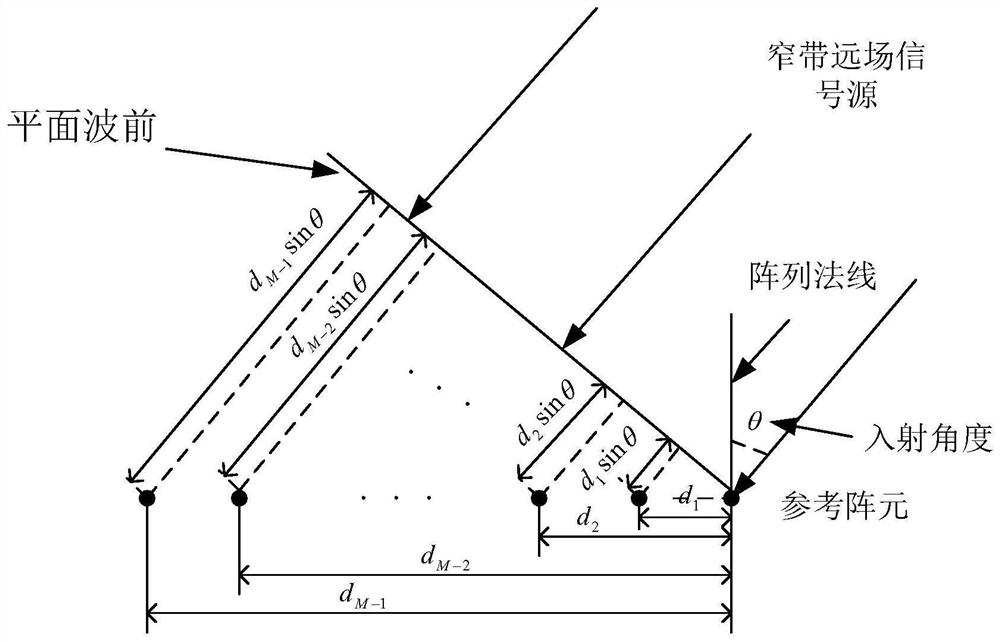Robust adaptive beam forming method based on subspace orthogonality
An adaptive beam, orthogonality technology, applied in radio wave measurement systems, instruments, etc., to achieve the effects of good adaptability, improved robustness, and accurate weight vectors
- Summary
- Abstract
- Description
- Claims
- Application Information
AI Technical Summary
Problems solved by technology
Method used
Image
Examples
Embodiment Construction
[0064] The embodiment of the present invention decomposes the eigenvalues of the covariance matrix of the data received by the array to obtain the signal subspace and the noise subspace, and utilizes the orthogonal nature of the signal subspace and the noise subspace to estimate a more accurate desired signal and interference steering vector, Use the information contained in the signal subspace eigenvalue matrix and the noise subspace eigenvalue matrix to estimate more accurate noise power and interference power, reconstruct a more accurate interference plus noise covariance matrix, and obtain a more accurate optimal weight Vector, which can improve the robustness of the adaptive beamforming method under various array error conditions.
[0065] Such as figure 1 As shown, the method first preprocesses the data received by the array, including: estimating the array covariance matrix, performing eigendecomposition on the matrix, and obtaining the signal subspace and noise subsp...
PUM
 Login to View More
Login to View More Abstract
Description
Claims
Application Information
 Login to View More
Login to View More - R&D
- Intellectual Property
- Life Sciences
- Materials
- Tech Scout
- Unparalleled Data Quality
- Higher Quality Content
- 60% Fewer Hallucinations
Browse by: Latest US Patents, China's latest patents, Technical Efficacy Thesaurus, Application Domain, Technology Topic, Popular Technical Reports.
© 2025 PatSnap. All rights reserved.Legal|Privacy policy|Modern Slavery Act Transparency Statement|Sitemap|About US| Contact US: help@patsnap.com



